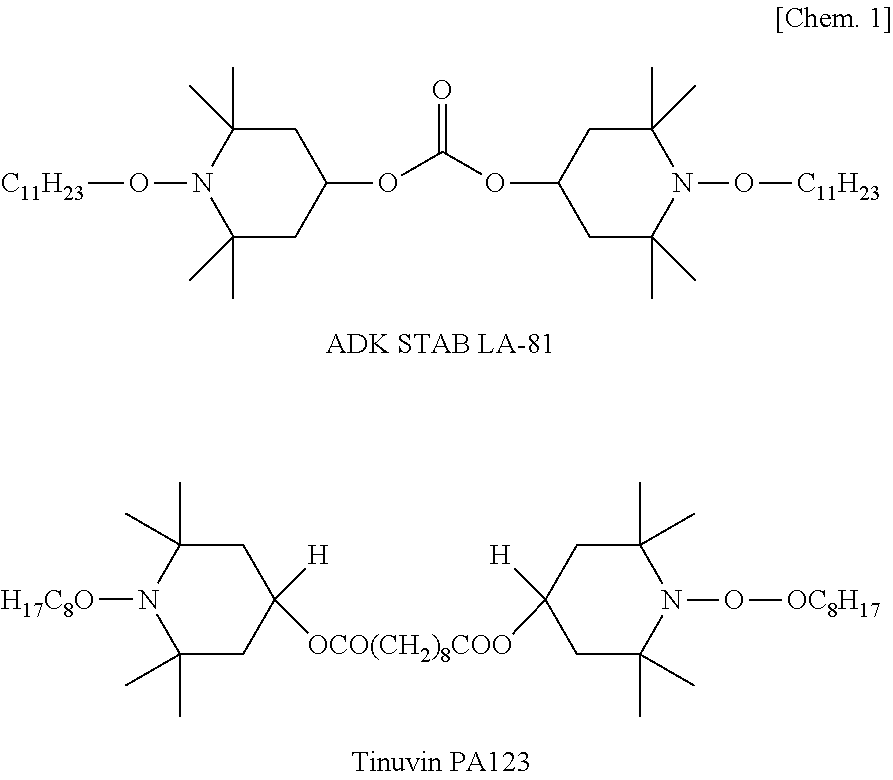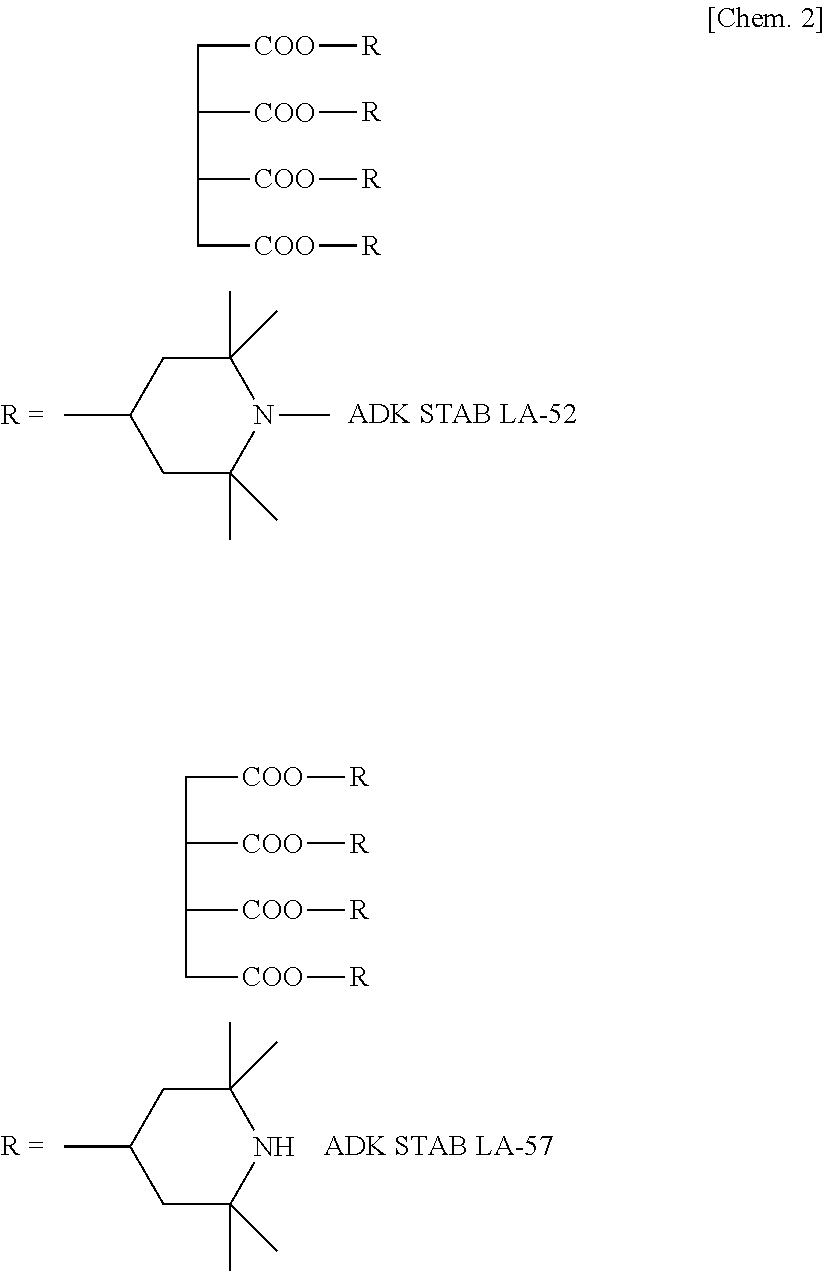Thermoplastic resin composition and molded article thereof
a technology of thermoplastic resin and composition, applied in the direction of coatings, etc., can solve the problems of deterioration of color developability (coloration properties) originally possessed by aromatic polycarbonate resin, disadvantageous low flowability and low formability of aromatic polycarbonate resin, and pc/abs resin, etc., to achieve excellent color developability, heat resistance and stiffness, excellent color developability, excellent design
- Summary
- Abstract
- Description
- Claims
- Application Information
AI Technical Summary
Benefits of technology
Problems solved by technology
Method used
Image
Examples
examples
[0106]While the present invention will be described below by taking specific examples and comparative examples, the present invention is not limited to these examples below.
[0107]The symbol “%” refers to “% by mass”, and the term “parts” refers to “parts by mass”.
[Measurement and Evaluation Method]
[0108]Various measurement and evaluation methods in the following examples, comparative examples, and reference examples are described below.
[0109]The volume-average particle size of the rubbery polymer (X) dispersed in an aqueous dispersion was measured with a Microtrac (“Nanotrac 150”, available from Nikkiso Co., Ltd.) using ion-exchanged water as a measurement solvent.
[0110]First, 1 g of the graft copolymer (B) was added to 80 mL of acetone. The mixture was heated to reflux at 65° C. to 70° C. for 3 hours. The resulting suspended acetone solution was fractionated by centrifugation with a centrifuge (“CR21E”, available from Hitachi Koki Co. Ltd.,) at 14,000 rpm for 30 minutes into a prec...
examples i-1 to 11
[Examples I-1 to 11 and Comparative Example I-1 and 2]
[0177]Components were mixed according to formulations (parts by mass) presented in Table 1. Furthermore, 0.8 parts of carbon black was mixed thereto. The resulting mixtures were melt-kneaded at 240° C. with a twin-screw extruder having a vacuum vent having a diameter of 32 mm (TEX-30α, available from Japan Steel Works, Ltd.) to produce pellets of the thermoplastic resin compositions. Molded articles produced by subjecting the pellets of the thermoplastic resin compositions to injection molding were evaluated by the above methods. Table 1 presents the results.
TABLE 1ExampleI-1I-2I-3I-4I-5I-6I-7FormulationAromatic polycarbonate resin (A)parts by50408040406060massGraft copolymer (B)B-1parts by20201030151030mass(Meth)acrylate-based copolymer (C)C-1parts by30401030453010massC-2parts bymassC-3parts bymassC-4parts bymassC-5parts bymassVinyl copolymer (e)e-1parts bymassEvaluationImpactIzodNormalASTMJ / m600550700600400550700resultresistanc...
examples ii-1 to 14
[Examples II-1 to 14, Comparative Examples II-1 and 2, and Reference Example II-1]
[0181]Components were mixed according to formulations (parts by mass) presented in Tables 2A and 2B. Furthermore, 0.8 parts of carbon black was mixed thereto. The resulting mixtures were melt-kneaded at 240° C. with a twin-screw extruder having a vacuum vent having a diameter of 32 mm (TEX-30α, available from Japan Steel Works, Ltd.) to produce pellets of the thermoplastic resin compositions. Molded articles produced by subjecting the pellets of the thermoplastic resin compositions to injection molding were evaluated by the above methods. Tables 2A and 2B present the results. Reference example II-1 corresponds to Example I-1 described above.
TABLE 2AExampleII-1II-2II-3II-4II-5II-6II-7II-8II-9FormulationAromatic polycarbonateparts by505050408040406060resin (A)massGraft copolymer (B)B-1parts by202020201030151030mass(Meth)acrylate-basedC-1parts by303030401030453010copolymer (C)massC-2parts bymassC-3parts b...
PUM
| Property | Measurement | Unit |
|---|---|---|
| temperature | aaaaa | aaaaa |
| particle size | aaaaa | aaaaa |
| particle size | aaaaa | aaaaa |
Abstract
Description
Claims
Application Information
 Login to view more
Login to view more - R&D Engineer
- R&D Manager
- IP Professional
- Industry Leading Data Capabilities
- Powerful AI technology
- Patent DNA Extraction
Browse by: Latest US Patents, China's latest patents, Technical Efficacy Thesaurus, Application Domain, Technology Topic.
© 2024 PatSnap. All rights reserved.Legal|Privacy policy|Modern Slavery Act Transparency Statement|Sitemap


